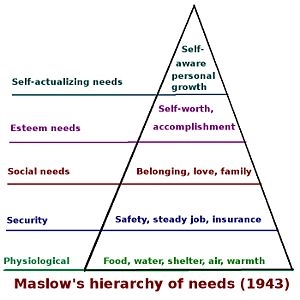Now that Christmas has passed, we have the next major season to look
forward to: tax time. This means that for the coming weeks we will be bombarded
with ads for RRSPs, RESPs, Mutual Funds and financial planning services.
Very few, if any, of these will focus on meaningful
investment, unless you happen to consider unlimited financial gains regardless
of the implications to be meaningful. A handful of funds, labelled as “ethical”
or “environmental”, profess to somewhat higher ideals, but often fail to
deliver much more than green-washing. In BC, investors may have an easier time
finding viable options that do less damage than good, but for most Canadians,
the choices are driven more by short-term, resource-laden gain than by a higher
set of ideals.
In sorting out one’s finances, we bump into some more
questionable value statements. The most obvious of these is the concept of “net
worth”. In banking terms, a person’s net worth is set entirely on their
financial assets, and nothing more. Every time I hear the term, I picture the
bridge scene from “It’s a Wonderful Life” in which George Bailey waves his
insurance policy and says he’s worth more dead than alive. I find it a sad
reflection on our society that we can use such terminology, and that this is
how we consider the worth of individuals. By this standard, Ghandi, Mother
Theresa, and most artists and religious leaders and prophets have no “net worth”.
Newborn infants certainly value their
mothers, but since they too have no “net worth”, we can toss out parenthood as
well. The victims of the shooting in Newtown probably didn't have much "net worth", nor do the hundreds of missing Canadian First Nations women, or Chief Theresa Spence.
It is true that this is simply the view of the world through
banking terminology, but to pretend that it doesn’t transfer into our society’s
culture is in my opinion, naïve. It is common for us to hold to highest value
that which is financially lucrative, and ignore or demean that which is less
so. This is why people who choose materially-based careers such as investment
banking or business administration are more highly regarded than those who
choose socially-based careers such as teaching or the arts. While the long-term
benefits to society of the socially based careers is likely to be of greater
benefit, the fact that these do not immediately turn a large profit means that
they bring with them less honour, prestige and a lower salary, except in
extreme cases. Few of our brightest and most motivated people are drawn to
these fields when compared with those drawn to the materially-based careers.
Looking at where our country invests tax dollars, it would
appear that our leaders value short-term financial gain for the few over long-term
sustainability. Indigenous people are valued least, followed by children,
immigrants and women. Natural resource extraction and foreign investment trump science (aside from the activities that involve cherry-picking studies in order to support a pre-determined financial agenda),
education and the environment. Basic needs such as food security and clean
water are secondary to foreign interests, tarsands development and military
investment. The military is invested in as if it were a consumable, with little
regard for soldiers and troops once they have served. Military engagement is
based not on ethics but on resources and economics. There is no need to
invest in science, research and development since it will not immediately
benefit politicians and the corporations who control them. In fact, to invest
in science, particularly in an inspiring, multi-national, long-term human
endeavour would go against the strategy of day-to-day existence that fuels our
increased reliance on unbridled consumerism. While the moon shot was once an
inspiration, it wouldn’t sell enough merchandise now to compete with the growth
mentality we’ve come to espouse.
We have a very obvious candidate for our collective energies,
that being climate change, but too many people seem to have bought into the
ideology of personal financial gain for us to move forward in any meaningful
way. We have lost sight of what is real. As long as competition and fear guide
us, we will continue to stagnate under the illusion of what we have fooled
ourselves into believing is of value. “Me first” may have us all drowning
(figuratively or literally) in the long run. Putting off tough decisions indefinitely does not work.
Our currency is a tool for trade, no more. What is it that
is worth trading? Starting with basic needs in order of importance: clean air,
clean water, healthy food, shelter, clothing. Money itself is not able to meet
any of these needs; you cannot breathe it, you cannot drink it, you cannot eat
it and gain any nutritional benefit (especially not those new plastic bills),
it would be difficult to build a decent shelter from it, and it isn’t very easy
or practical to sew together and wear. Money is a tool for trading goods, and
is not a replacement for them. We seem to be losing sight of this rather
obvious fact as evidenced by our government passing legislation that
threatens the first three of these things.
Part of our problem too is that people have a nasty habit of
looking at things with a competitive mindset. Because of this, the countries of
the world are hesitant and defensive when it comes to working together on
projects in which they are required to truly share in a long-term and meaningful
way. There’s always a “you go first” playground-style defensiveness that keeps
us from moving forward in a timely fashion to work on problems that concern all
of us. Moving beyond this is crucial if we are to solve the climate change
problem, yet I fear that we haven’t progressed far enough to accomplish this in
time.
There are people out there who are busy working towards change, people like Chief Theresa Spence who are willing to put themselves on the line for the sake of future generations. It is up to you and I to support their efforts. We need to redefine the meaning of "net worth" in our personal lives as well as in the larger culture. The time for change has come.








